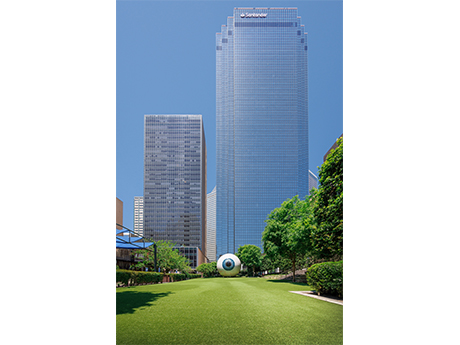By Nate Wilkins, associate at Munsch Hardt Kopf & Harr PC
Office conversions represent one of the hottest real estate plays in the country, and Texas is undoubtedly a hotspot for those projects.
According to D Magazine, in Dallas and Houston combined, there is more than 10 million square feet of vacant office space that is currently being transformed or is slated for conversion. A majority of these projects are mixed-use, meaning that office tenants will eventually be occupying the same building as residential tenants.
Therefore, there are several key factors that office tenants and their landlords must consider when signing or renewing leases in the conversion projects, including utilization of common areas, use of utilities and parking allotments. What follows are some strategies for navigating office conversions as they become more prevalent in Texas over the next several years.
Common Areas
In a typical mixed-use property in which retail space is on the ground floor with multifamily above, landlords are prone to include lease language that states, “Tenant shall have no right to use the elevator lobbies, apartment floors and any other areas designated by landlord exclusively for residential occupants.” While standard, this language becomes troublesome when the only way to get to a tenant’s office space is through the inaccessible elevator that residents use every day.

For example, many office conversion projects are occurring in high-rise office buildings, such as Santander Tower or The Sinclair in downtown Dallas. Santander Tower, in particular, installed single-use elevators in which tenants or guests select their floors before entering the elevator. This system reflects an attempt to combat some of the issues caused by having separate elevators while maintaining a sense of separation between residential and office tenants. However, some residential tenants would prefer to avoid rush hour elevator traffic, and the single-use elevators may not be satisfactory. In instances like these, landlords’ counsel may need to negotiate what elevators high-rise office tenants may use and at what times.
Another complication that arises during the office-conversion process is that common space will likely be transformed into amenities for residents, such as a gym or pool area. In a typical mixed-use property with garden-style apartments, it is extremely rare for retail tenants to have access to such apartment amenities, but those lines inherently start to blur once the new gym or pool are so easily accessible to the office tenants going to work five days a week. Whether or not office tenants obtain access to such amenities can be used as a bargaining chip in the landlord’s favor.
Another consideration for counsel is the tenants’ share of the costs of operating and maintaining common areas. Operation of a residential building will likely lead to different requirements for security, inspections, trash removal and personnel for management of the building. Moreover, renovations related to transforming an office building into a residential building may include improvements to the lobby area. An office tenant that has been in the building for years arguably should not have the burden of paying for such improvements and the maintenance thereof.
Most leases include a clause that excludes capital improvements completed during the lease term from common area maintenance expenses, but upon renewal of an existing lease or a new lease, this may be a highly negotiated issue. From the landlord’s perspective, the office tenants would still be the beneficiaries of such improvements, such as increased security, and an office tenant can avoid leasing a space in a converted building based on not wanting to pay the higher maintenance expenses.
Renewal Terms
As landlords begin the office-to-multifamily conversion process, their goal may be to fully transition from office to residential. If this is the case, landlords can proactively work with existing tenants during lease renewals to remove the option to extend at the cost of free or reduced rent. Alternatively, if the landlord is still leasing its office space, he or she may strategically limit offering renewal options if the office space is several years from being converted but is still a viable, rent-generating office space.
Utilities
Commonly, a tenant’s “proportionate share” with respect to the common area expenses equals a percentage, calculated by dividing the square footage of their space by the square footage of the building as a whole.
Now, office buildings that used to contain between one to four commercial tenants per floor may have six to 10 residential tenants per floor. Tying back to common area expenses, office tenants must be sure that the additional amenities that they do not use are not included in that proportionate share. Navigating what the appropriate proportionate share should be now that such residential tenants likely are not paying a proportionate share of common area expenses as a typical office tenant will be a critical focal point for attorneys on the landlord and tenant sides.
Parking
Issues surrounding parking and vehicle access to the converted building are less of a concern in suburban areas. But according to The Texas Tribune, a high volume of office-to-residential conversions are occurring in downtown, urban settings, making factors such as parking allotment and city approval more crucial to address.
For example, parking garage traffic will differ when adding more units to a building, especially if each residential unit accounts for two vehicles. Additionally, if there are valet parking options, it is essential to consider whether office tenants have access to such features and which tenants will get priority parking areas in the parking garage. These options provide landlords with some flexibility but require careful consideration as to which class of tenant to cater to while the conversion is underway.
As city centers continue to move toward increasing residential density in exchange for office square footage, landlords and tenants must continue to pay close attention to various factors for leases in office space conversions. Carefully curated language on common area expenses, parking allotments, utilities and renewal options represents a means of adding value for clients and minimizing disruption to these highly complex, yet much-needed projects.
The information contained in this article is provided for informational purposes only, and should not be construed as legal advice on any subject matter.


